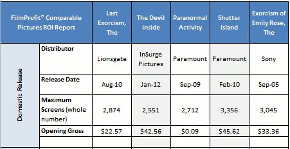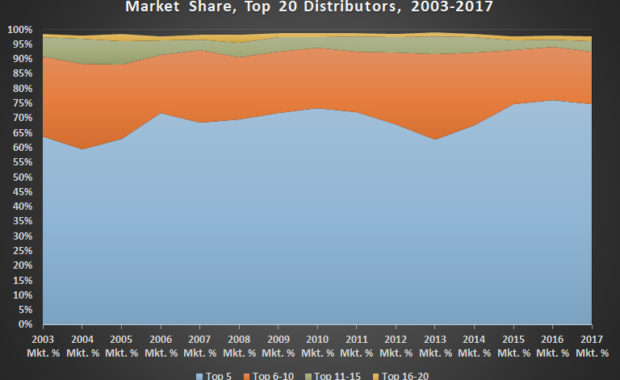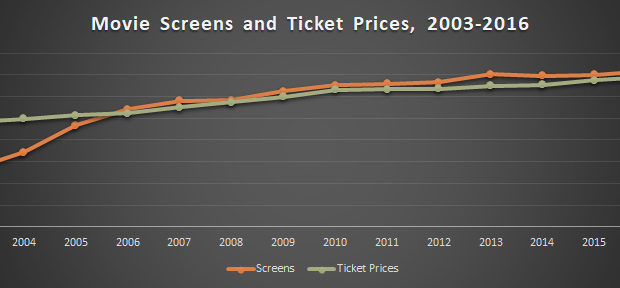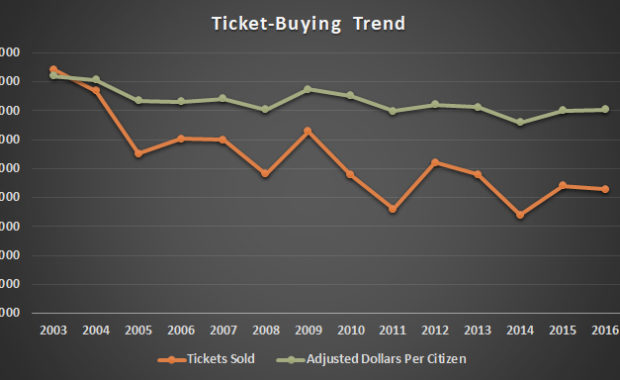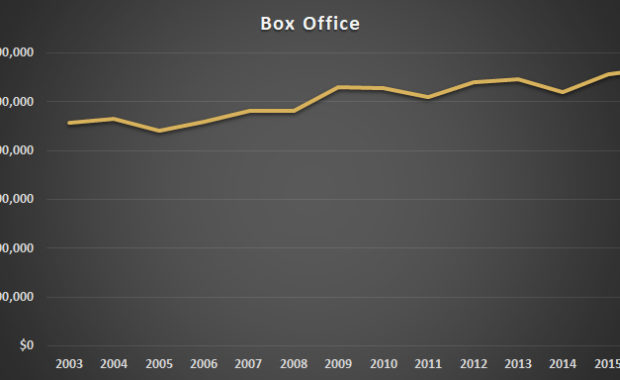If you're in the film business there's a good chance you've read a statement like this before: Statements like this usually go on half a page or more, listing a pile of risks, including competition and the like. But I am focused here on the specific risks a producer
Continue ReadingComparable Pictures: How to Choose ‘Em and Use ‘Em
I have helped producers choose and use literally thousands of titles for comparison to the films they seek to finance and make. When I am preparing projections and financials packages, whether for a single film or a slate of films, the first crucial task for me is to
Continue ReadingBox Office Panic! Part IV
What Chance Do Indie Films Have? Over the last three weeks, I had wanted to explore whether, as some were intimating, the idea of going to see movies in theaters is a dying market. Hi Def TVs, Netflix and Amazon around the world, TV downloadable to mobile devices, couch
Continue ReadingBox Office Panic! Part III
Last week, I discussed box office, primarily by quarters over the last nearly eight years. I hinted that I was going to go in a slightly different direction to see if we can discern if there are fundamental elements causing this to play out the way it does, and who is
Continue ReadingKey Risks in Making a Film, & How to Manage Them, Part II
Be Prepared With a Ready Script! I Have Always Subscribed To The Boy Scout Motto: “Be Prepared.” The purpose of this series is to discuss and study the key risks inherent in the motion picture business. By contemplating, planning for and planning against these risks
Continue ReadingBox Office Panic! Part II
In my previous installment of this probing into the health of the movies in theaters business, we looked at two rudimentary charts that showed that, though the industry touts the fact that box office goes up each year (kind of like a public company report that wants to say
Continue ReadingBox Office Panic! Part I
Some in Variety, in the Hollywood Reporter and other outlets have been panicking that this down movie ticket year is the death knell of movies in theaters. I am no Pollyanna, but I heard this story in 2005 as well, of course coming off of the sterling year which brought us
Continue ReadingThe Proliferation of Digital (VOD/SVOD/etc.) and the Further Fracturing of Markets
As seen from the view in Brazil It has been true over the last forty years that as a new movie-viewing platform arrives, chances for consumers to hone their tastes, and to fine-tune their choices has expanded film viewing and expanded film income. At the same time,
Continue Reading
